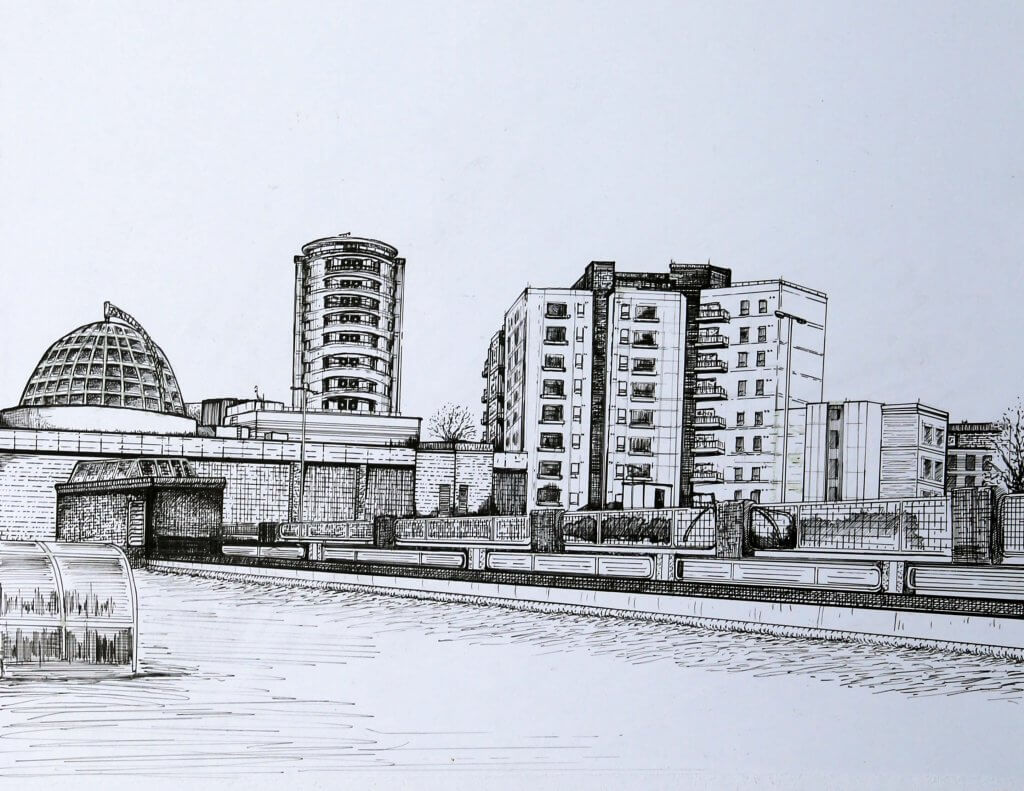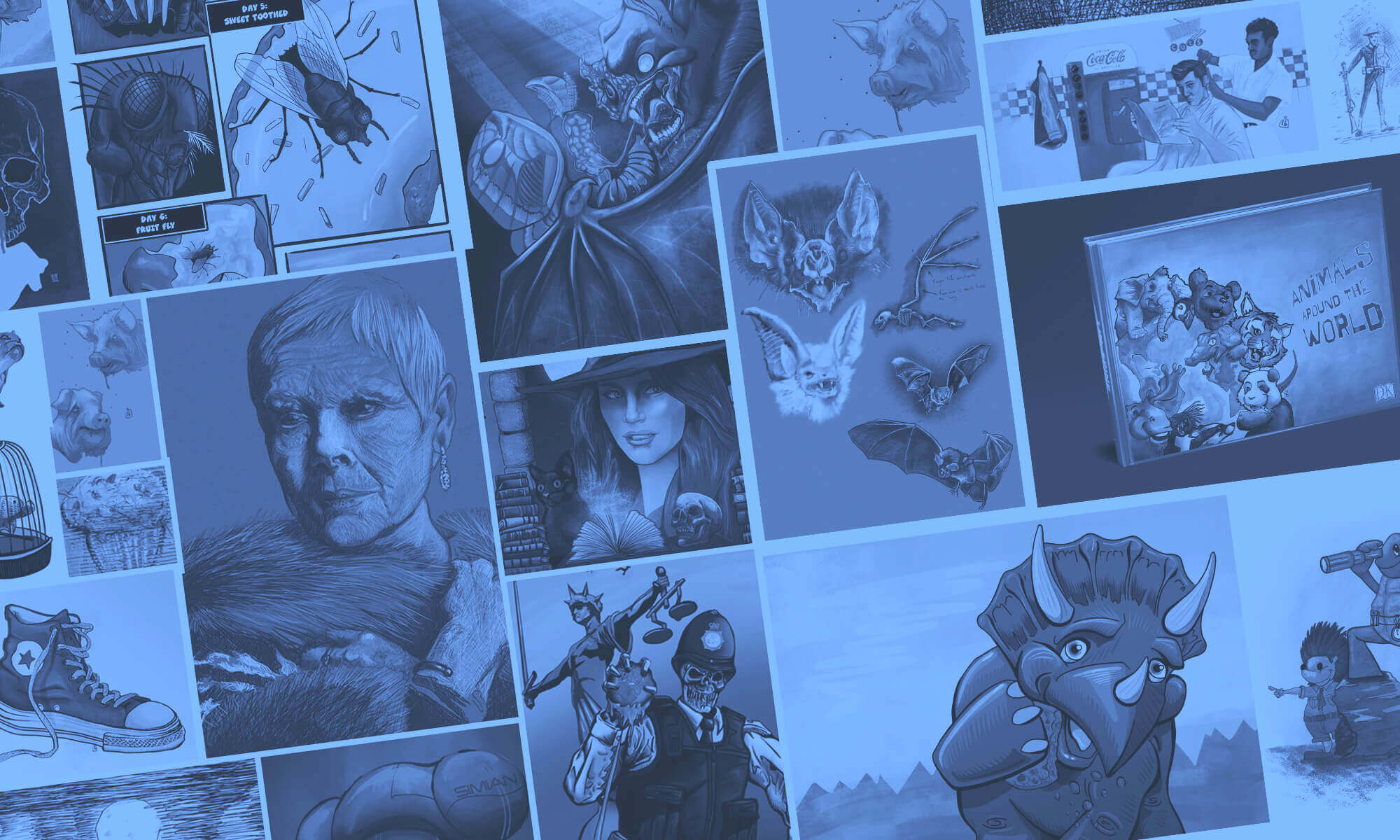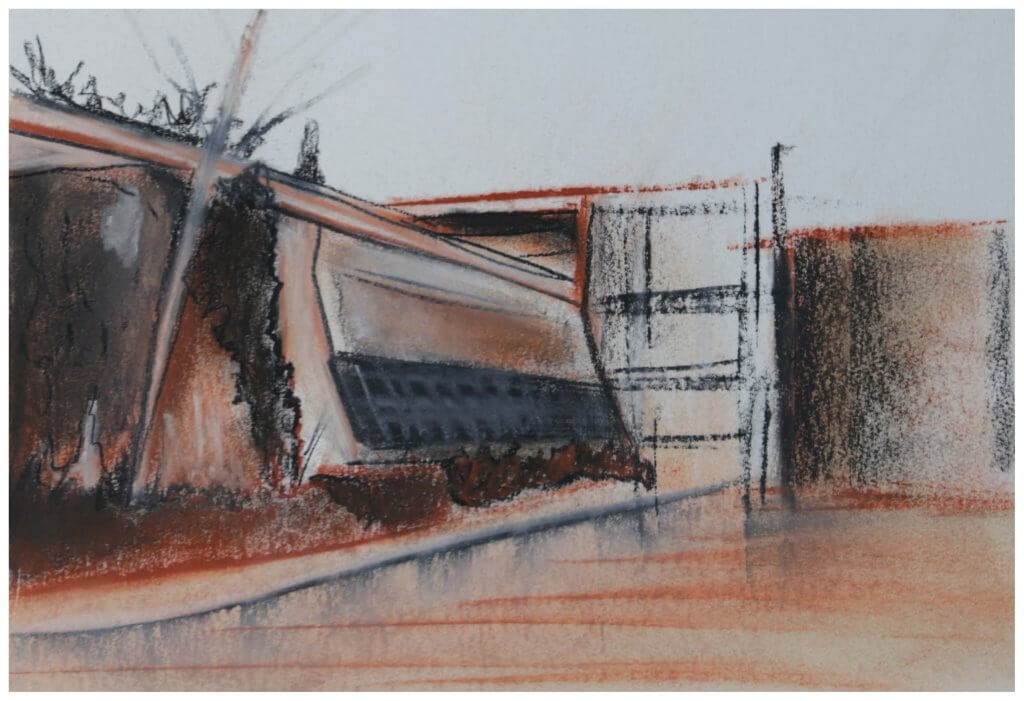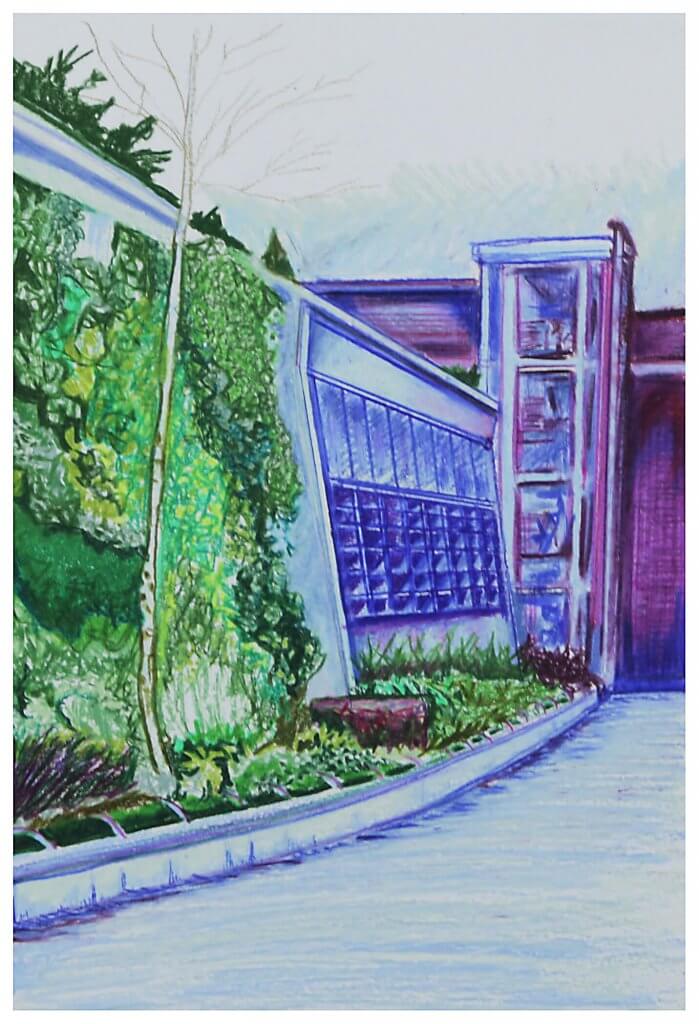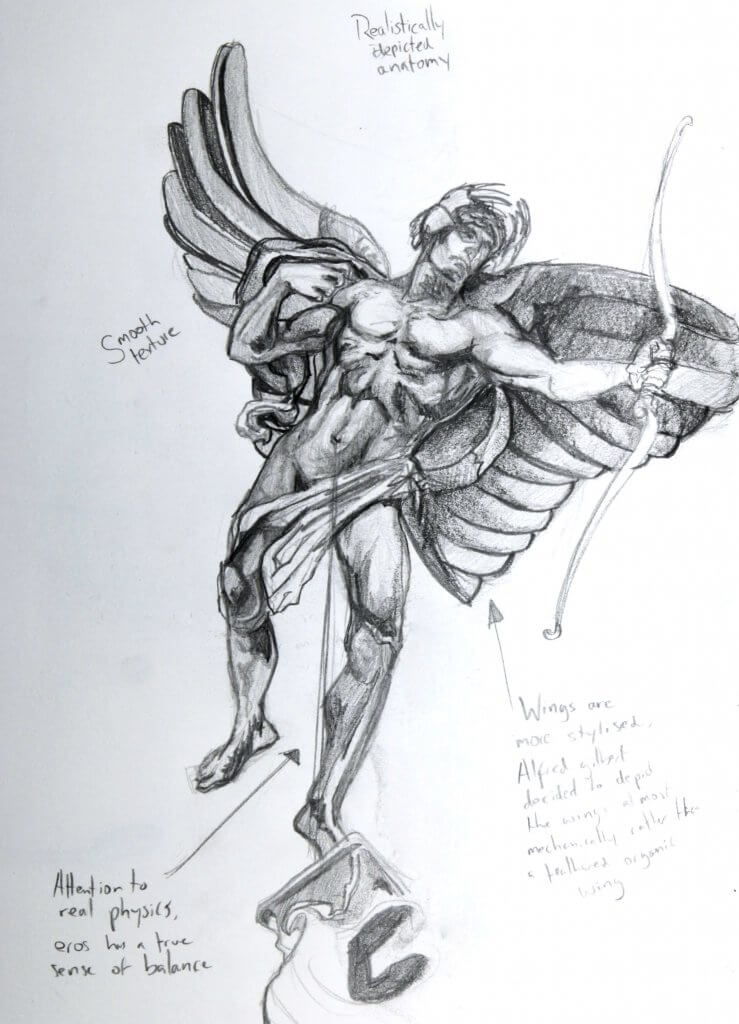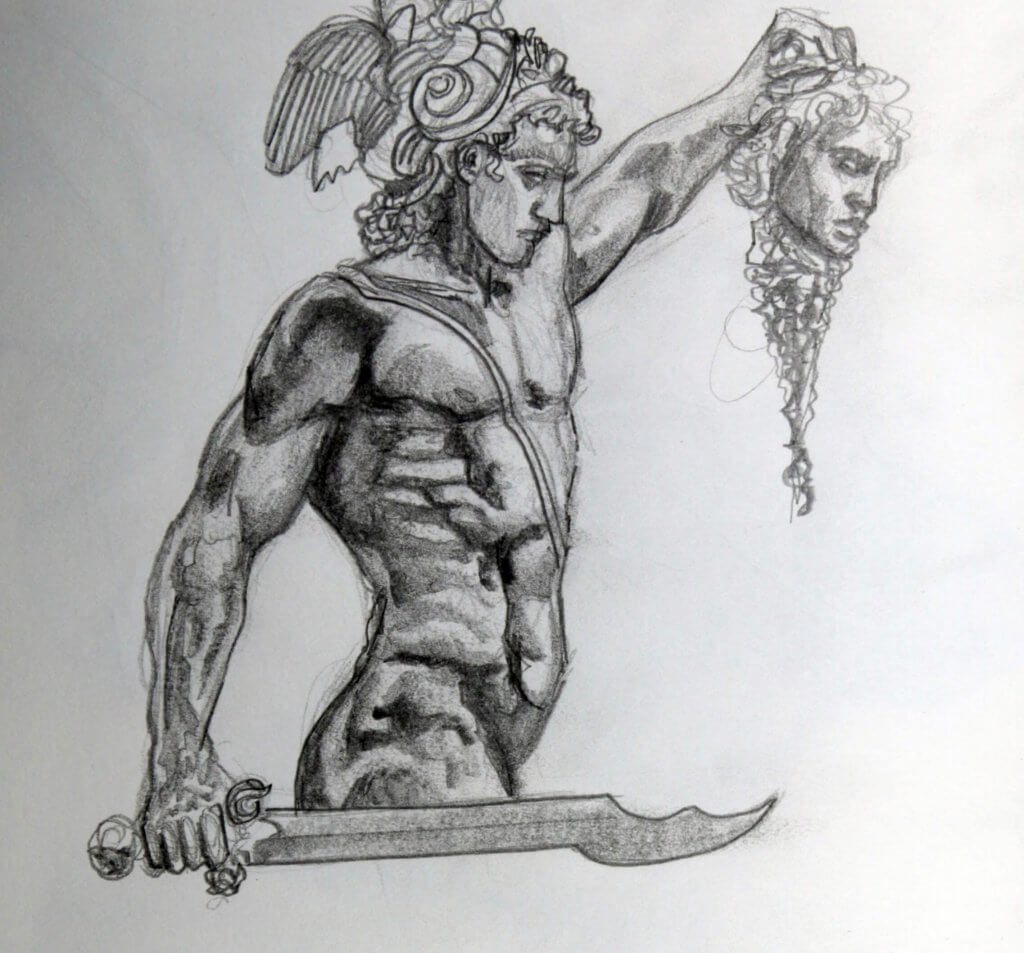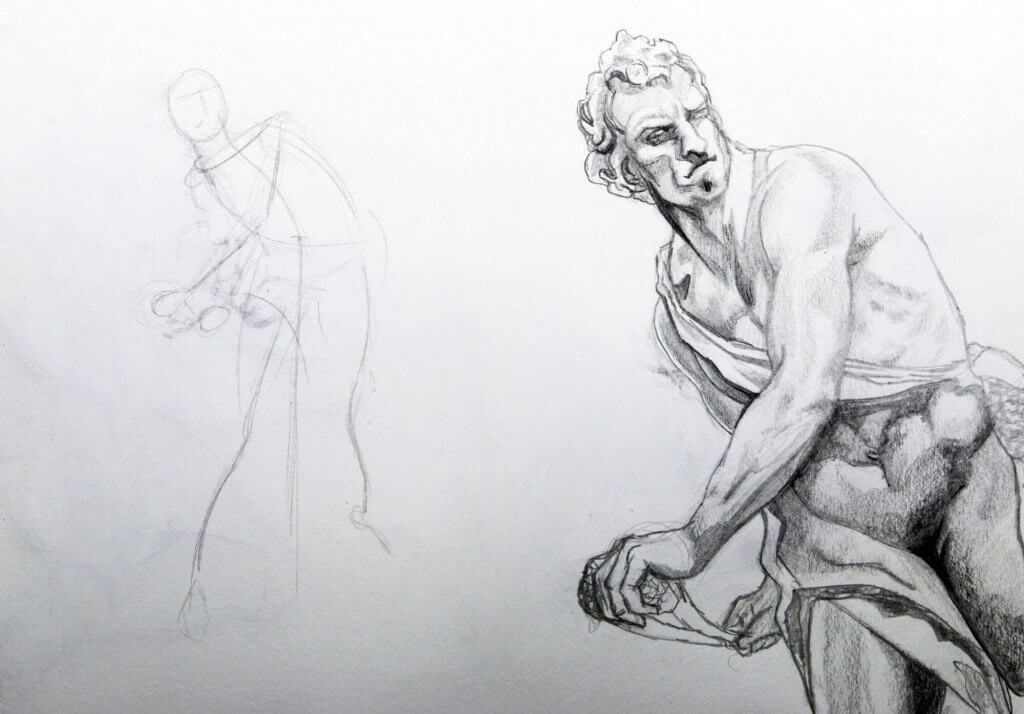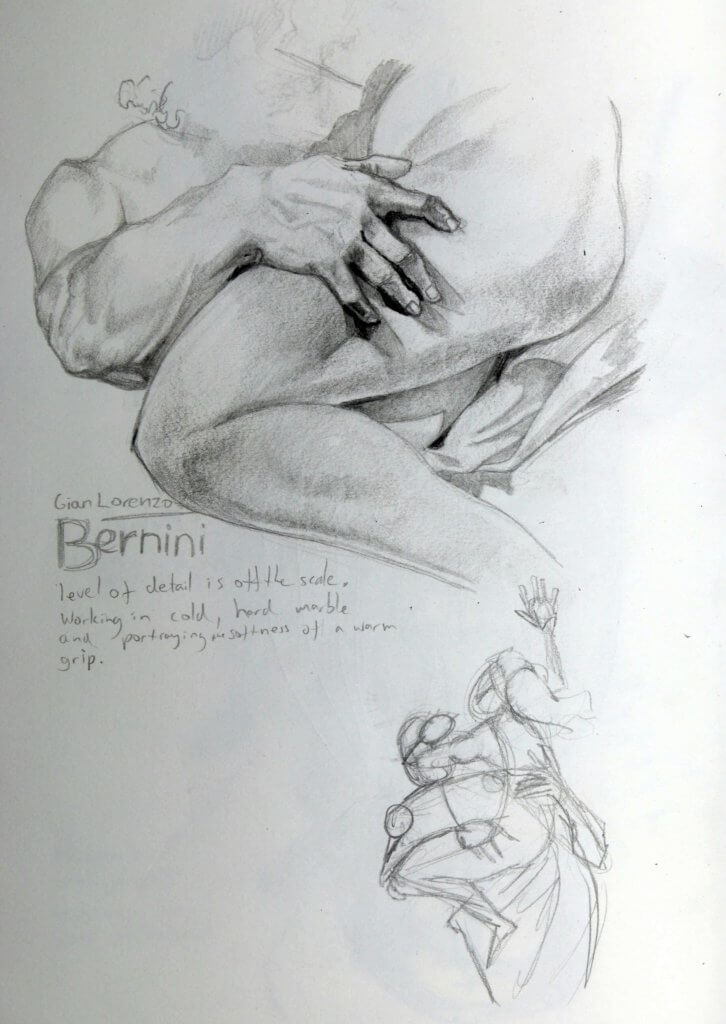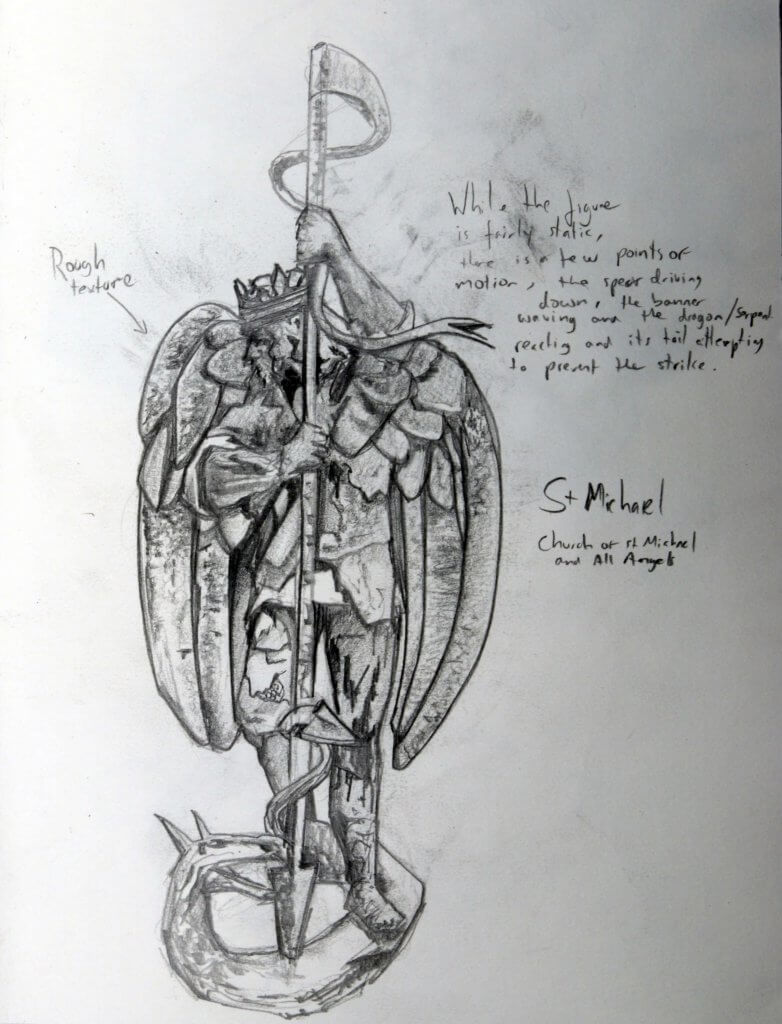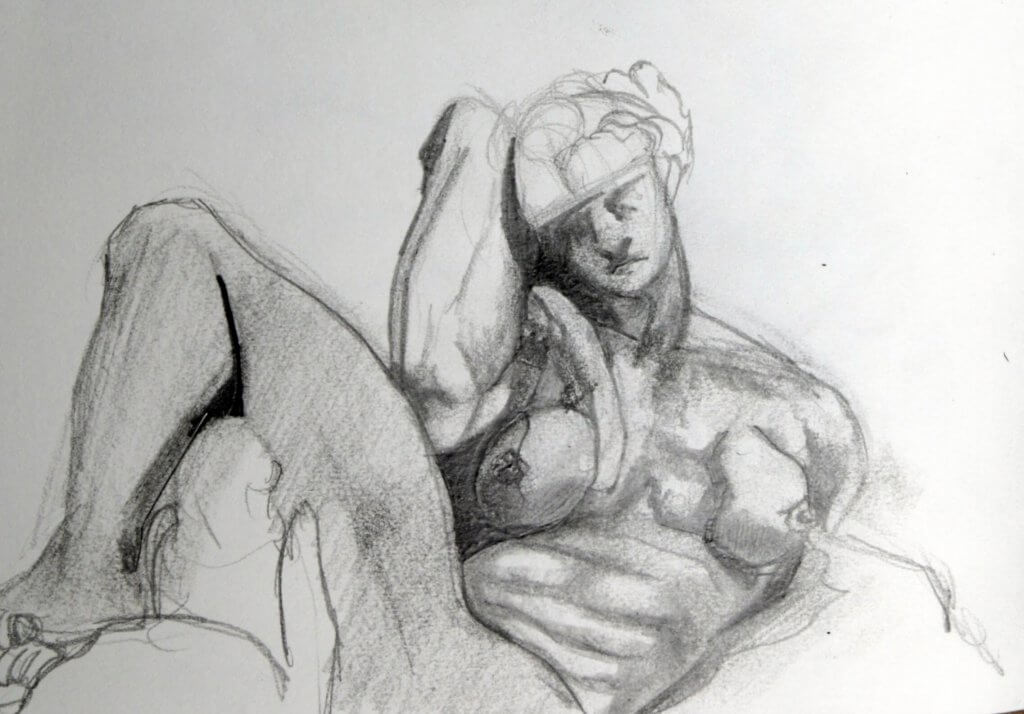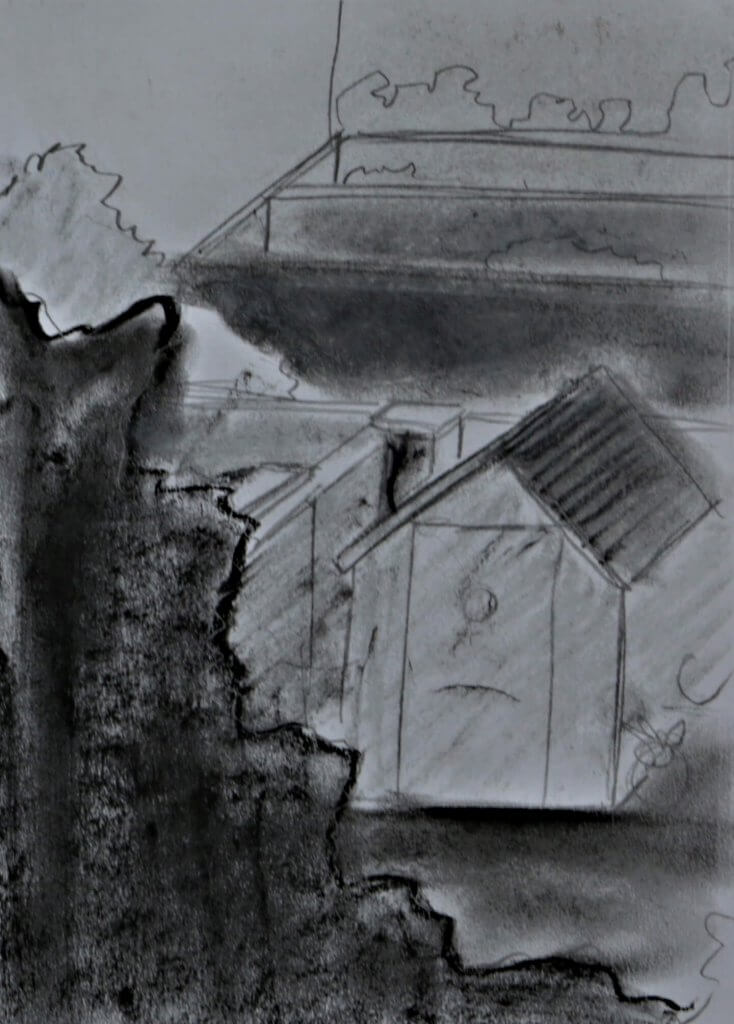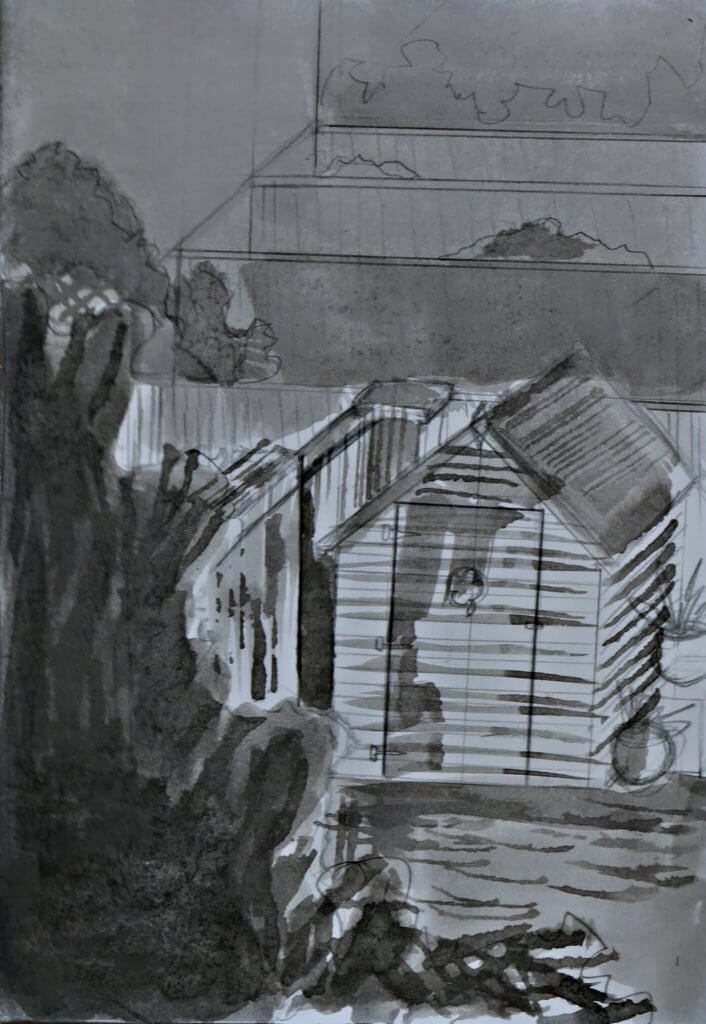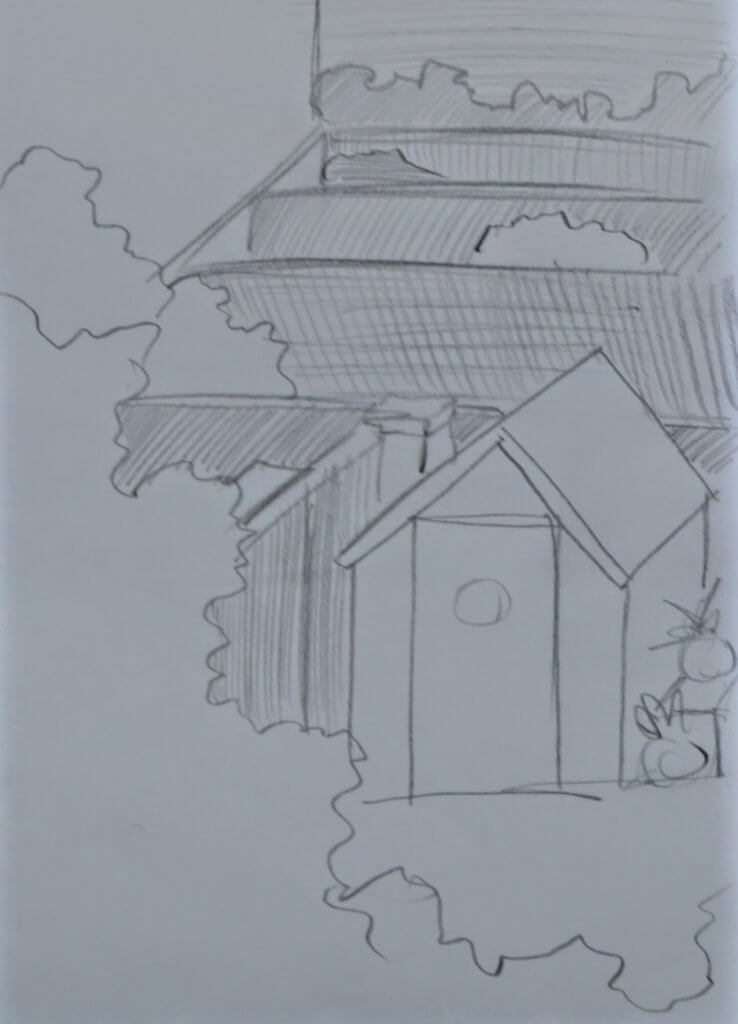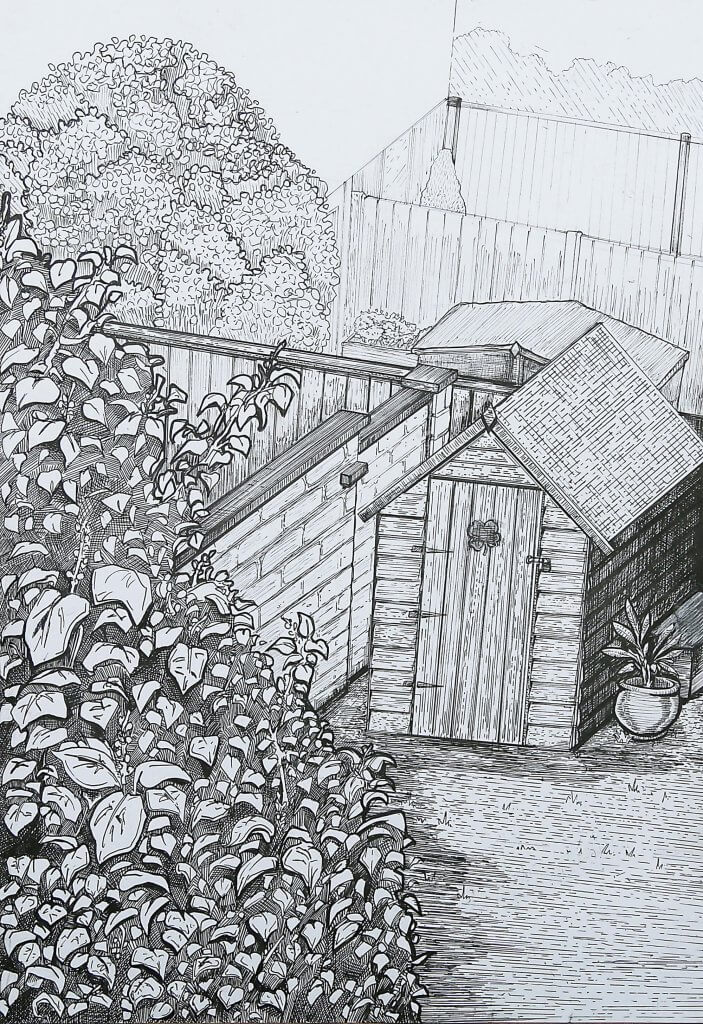This drawing was also made from a photograph, in fact the same set of photographs I took for my previous drawings. We are still in a lockdown and this area is actually a busy multi story carpark, it did give me a good view point to work from, captuting the tops of the skyline. These buildings are very 70’s looking, the unconventional shapes feel like they they almost could serve as filming locations for something set in the future, like Kubricks clock work orange or Star wars. This is Romford, below that scene is an expanse of retailers, coffee shops and mobile phone repair. Not the most scenic or interesting place to visit or indeed draw.
I started out with a sketch as instructed, I learnt a great deal of how the buildings were constructed and gave some thought on how I might apply some texture.
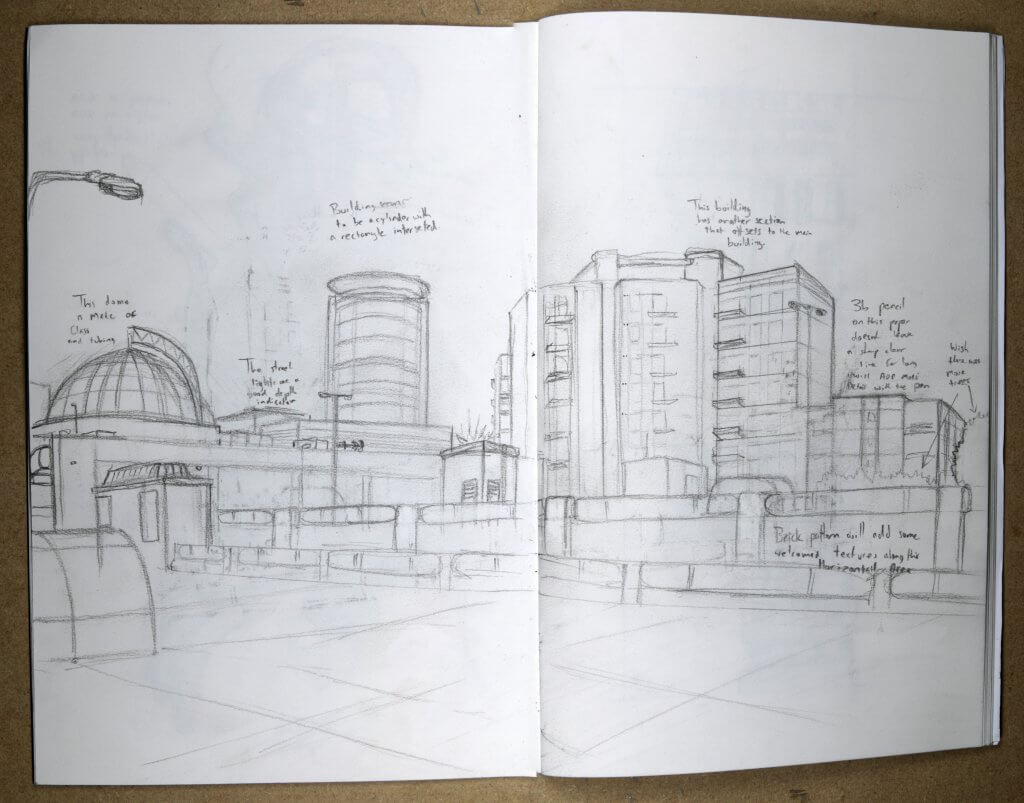
I decided to draw the final image on bristol board, the image looks a little skewed here which I think might be more to do with the photography and the angle I photographed it at, I will try to re photograph this if I end up selecting this as a submission piece.
I Initially didn’t want to use a ruler, keeping it free hand would give it a very different feel , this proved to be problematic, especially in the details, one false move and it really threw off the perspective. I carried on with the ruler and tried to keep the line weights varied.
The weather was very over cast there was little to no shadows, I wanted to add some texture to the drawing to try to stop it being too flat. This made a lot more work, I ended up developing a bit of a system using pen and ruler to help aid the line work, hatching and angling the ruler to cross hatch I would sometimes use a flat line and sometimes a broken line, sometimes i would stop and add in some dotted marks along the edge of the ruler. I could see with a little more practice this could be worked into something quite stylish.
